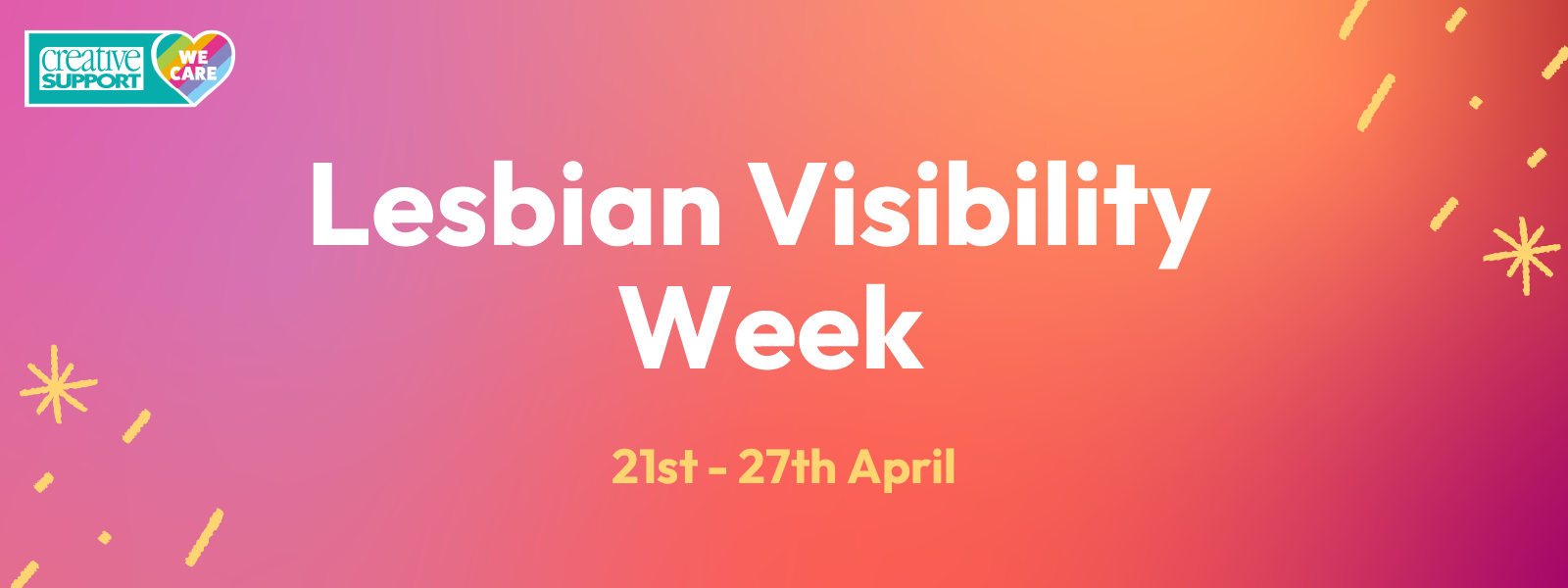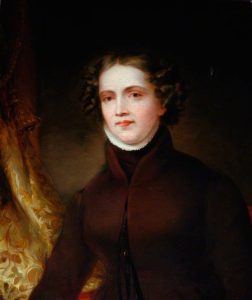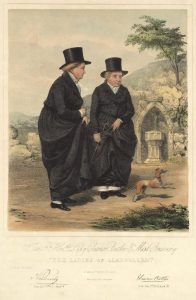Lesbian Visibility Week

Lesbian Visibility Week (21-27th April) gives us an opportunity to recognise and celebrate love that some women, trans, and non-binary people experience. Amber, a Bid Writer in our Tendering team, talks about how lesbian love often goes underrepresented or minimised across media and political mediums.
According to workplace data, 23% of people who identify as LGBT said they are less likely to be open about their personal lives, compared to 90% of women identifying as straight who said they would openly discuss the topic. Similarly, LGBTQ+ employee networks across all sectors are usually less likely to achieve visibility for lesbian employees compared to cis men who identify as gay.
This got me thinking, what does lesbian visibility actually mean for lesbian and queer communities? How can we amplify the voices of those of us who express lesbian identity, and all the intersections that come with it? Well, I believe it starts with a history lesson.
Same-sex and queer relationships have always existed in one form or another. Whether it be through historical love affairs or passed down knowledge of sexual orientations and gender constructs across different societies (e.g. being ‘two-spirit’ which is a broad term used exclusively amongst Indigenous and Native communities to describe valued social functions for individuals who are gender-varying). Therefore, it’s clear that when it comes to people connecting with themselves and one another, there has never been a ‘one size fits all’.
Be that as it may, it is hard to find historical societies depicted as anything but accepting. Whilst lesbian expression has slipped through the net of homophobic laws within the history of UK legislation, it by no means helped women and gender non-conforming lesbians to openly express themselves. However, the way we view the past has fortunately gained new perspectives in recent years, with more historians breaking down the lives of historical people and finding truths about who they actually were and what they experienced, leading to discoveries that some had lived visibly queer lives.
It is here where I introduce Anne Lister (1791-1840), an industrialist landowner, explorer, diarist, and gender non-confirming lesbian who lived (relatively) openly as herself in Halifax during the 19th century.
I was fascinated with Anne after watching the BBC TV show ‘Gentleman Jack’, (played by the wonderful Suranne Jones), which tells a fictionalised tale of what Anne’s life was like. I was compelled to read her diary volumes to understand more about what lesbian identity and queer communities looked like for the upper-echelons of Georgian England.
Anne had written over five million words in countless journals throughout her lifetime, with several passages written in a crypt-hand using a combination of algebra, Greek, and Latin, allowing her to write authentically about her life as a woman who was unapologetically attracted to other women. Her diary passages were not divulged until 1982, when Yorkshire-born historian Helena Whitbread spent six years deciphering the code, and published her entries for the public to read.
Anne was a revered socialite, and over the course of her life, had independently gained influential power over industrial development, and social status. On March 30th 1834, Anne exchanged rings and marriage vows with heiress Ann Walker. They sealed their union after taking sacrament together at Holy Trinity Church in Goodramgate. Whilst this was not considered an official marriage, close friends and relatives celebrated the event with them. After the ceremony, they moved in together and left their estates and finances to each other in their wills.
Anne’s social circles were varied throughout her life, but she remarks on several queer people, including platonic and romantic interests that she encountered. She often referred to a close friend, Frances Pickford (known as ‘Frank’ or ‘Pick’), who was described as similar to herself; presenting as more masculine and also pursuing romantic interests with women.
Similarly, Anne briefly met with ‘The Ladies of Llangollen’, who were two women – Lady Eleanor Butler (1739-1829), and Sarah Ponsonby (1755-1831) – from Irish aristocracy, who had fled from their wealth and families to live together in a small stone-built cottage in North Wales. They made their money through coveting a modest celebrity status as two women in domestic partnership. The likes of Lord Byron, William Wordsworth, Charles Darwin and Queen Charlotte corresponded with them, and King George eventually granted them a royal pension to secure their financial stability.
So, what does this say about how society in the UK see lesbian visibility? I think there are two main elements at play here:
- The way sexuality and gender are navigated across society has always been in a constant state of change, and when history reminds us of this, it can help us feel empowered to reject prejudice and bigotry that the lesbian and queer community, as a whole, are often faced with still to this day.
- History also reveals that wealth and status has typically helped in accepting identities outside of social norms, and for this reason, we may never have a full picture of how underprivileged people navigated lesbian and queer relationships throughout British history. However, this can fuel us to amplify the voices of lesbians alive today, and to see lesbian visibility as intersected, made up of a truly diverse community that are connected by their shared expression of love, and unique experiences with womanhood.
As the focus of this year’s Lesbian Visibility Week is on ‘rainbow families’, I see this small dive into lesbian history as an excellent opportunity to reflect and be proud of how far we have come in raising awareness and promoting acceptance. We still have far to go, but we are building better resources to educate future generations on what historical societies have in common, and where they differ, with today’s world.
Additional Resources:
Everything you need to know about Lesbian Visibility Week 2025
The History of Trans & Non Binary Lesbians | Rainbow & Co
Anne Lister | Calderdale Museums
https://she-is-a-regular-oddity.blogspot.com/2022/07/introduction.html
The Ladies of Llangollen — Making Queer History
Anne Lister: Lesbian Icon or Enemy of the Working Class? – Uncomfortable Oxford
Sources mentioned in the article:
3/4 of LGBTQ+ Women Still Fear Coming Out at Work, Reveals New myGwork Research
How the LGBTQ+ community fares in the workplace | McKinsey
If you’d like to write an article about LGBTQ+ identities, histories or communities, let us know by emailing lgbtq.network@creativesupport.co.uk !



